Emissions Trading System for Aviation
Scope of the EU ETS – Aviation
Aircraft Operators: Aircraft operators with flights departing from or arriving at an aerodrome located in a State of the European Economic Area (EU-27 Member State, Iceland, Liechtenstein and Norway) must comply, unless subject to applicable exemptions as provided for by the Directive.
Switzerland: Some aircraft operators may also fall under the Swiss emissions trading system. Under the linkage agreement between the EU and Switzerland, administration of these aircraft operators remains with the single State to whom an aircraft operator has been attributed,
Your EU ETS Obligations – Navigating the Skies of Compliance
The ETS for Aviation provides a clear and structured path to compliance:
Step 1: Monitoring Emissions
An aircraft operator shall develop a comprehensive monitoring plan, to be approved by the national competent authority, to accurately track emissions from flights within the scope of the ETS Directive.
Step 2: Preparing Annual Reports
The aircraft operator shall, annually, prepare an Emissions Report detailing flight operations and associated emissions.
Step 3: Verification and Submission
The aircraft operator shall engage an independent, accredited verifier to verify the emissions report, ensuring transparency and accuracy. Deadlines apply for the submission of annual emissions reports.
Eligible small emitters may benefit from the waiving of the requirement to verify their annual emissions reports, by using reports populated by data from EUROCONTROL.
Step 4: Surrendering Allowances
Based on reported emissions, the aircraft operator shall surrender the corresponding number of allowances.
Administering Member State
Malta is responsible for administering the EU ETS for:
- Operators with a Maltese Licence: Any aircraft operator with a valid operating licence granted by the Civil Aviation Directorate in Transport Malta.
- Other Operators: any aircraft operator that holds a valid operating licence granted by a State that is not a member State of the European Economic Area or Switzerland, or that Is not required to hold an operating licence (non-commercial operator), and has been attributed to Malta as its administering State in accordance with the rules set out in the ETS Directive.
Free Allocation of Allowances
Free allocations for eligible aircraft operators administered by Malta for the years 2024 to 2025 shall be thus:
| Aircraft Operator | 2024 | 2025 |
|---|---|---|
| Air Horizont Ltd | 6021 | 3820 |
| AIR MALTA PLC | 52948 | 33595 |
| Air X Charter Ltd | 6905 | 4381 |
| Comlux Malta Ltd. | 892 | 566 |
| Corendon Airlines Europe | 49520 | 31420 |
| Elitavia Malta | 765 | 485 |
| Flexjet Malta | 3934 | 2496 |
| Freebird Airlines | 14825 | 9406 |
| SkyUp MT Limited | 51 | 32 |
| Vista Jet Ltd | 18449 | 11706 |
| Wizz Air Malta Ltd | 258156 | 163801 |
CORSIA – Carbon Offsetting and Reduction Scheme for International Aviation
The Carbon Offsetting and Reduction Scheme for International Aviation (CORSIA) is a mechanism established by the International Civil Aviation Organisation (ICAO) as part of the package of measures adopted by that organisation to reduce greenhouse gas emissions from international aviation activities performed by commercial aeroplane operators.
CORSIA is implemented in the EU via the EU ETS Directive.
Scope of CORSIA
CORSIA applies to relevant emissions from international flights (it does not apply to domestic flights), between States that are members of ICAO.
CORSIA Obligations
The key compliance steps for CORSIA are:
Step 1: Monitoring Emissions
The aeroplane operator shall develop a monitoring plan, approved by the Climate Action Authority, to accurately track emissions from flights within the scope of CORSIA. An operator that also has obligations under the EU ETS, the monitoring plan for ETS and CORSIA may be integrated.
Step 2: Preparing Annual Reports
The aeroplane operator shall, annually, prepare an Emissions Report in respect of flights that fall within scope of CORSIA.
Step 3: Verification and Submission
The operator shall engage an independent, accredited verifier to verify the emissions report, ensuring transparency and accuracy. The verified report to the national competent authority by the applicable deadline.
Step 4: Offsetting Requirement
Each year, and finally, at the end of each CORSIA phase, the national competent authority will notify an aeroplane operator of its offsetting requirement for the relevant year and for the relevant period, in accordance with CORSIA rules.
Step 5: Offsetting
Based on the notified offsetting requirement, an aeroplane operator must acquire and cancel an equivalent quantity of offsetting units from programmes approved by ICAO. Verified proof of such cancellation shall be provided to the relevant administering State.
Administering Member State
Malta is responsible for administering CORSIA for aeroplane operators holding a valid operating licence granted the Civil Aviation Directorate in Transport Malta.
Contact Us
For inquiries related to the EU ETS in respect of aircraft operators, and, or CORSIA, please contact the Climate Action Authority:
Email: ets.caa@climateaction.gov.mt
Phone: +356 23850500

